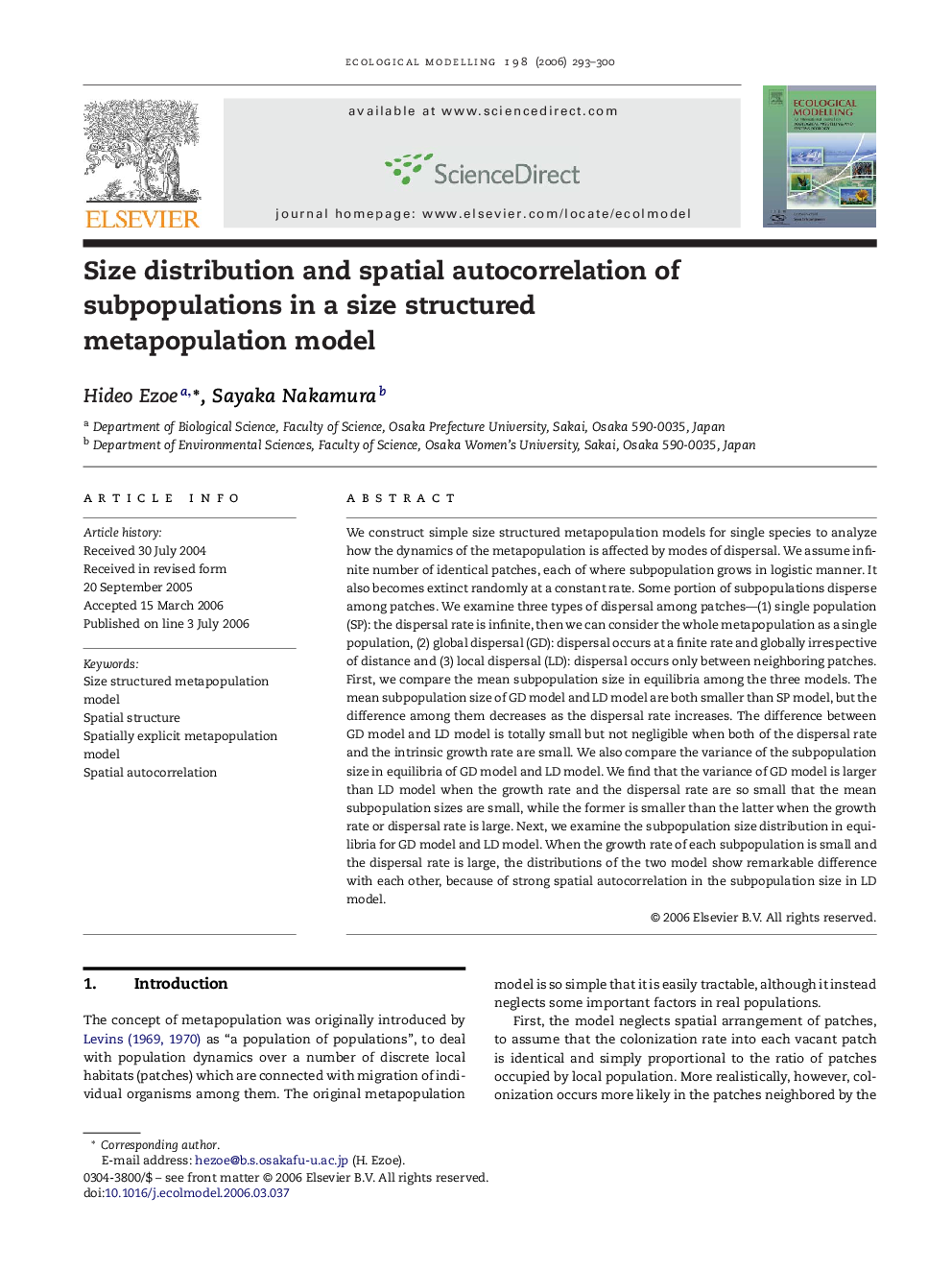| Article ID | Journal | Published Year | Pages | File Type |
|---|---|---|---|---|
| 4379055 | Ecological Modelling | 2006 | 8 Pages |
Abstract
We construct simple size structured metapopulation models for single species to analyze how the dynamics of the metapopulation is affected by modes of dispersal. We assume infinite number of identical patches, each of where subpopulation grows in logistic manner. It also becomes extinct randomly at a constant rate. Some portion of subpopulations disperse among patches. We examine three types of dispersal among patches-(1) single population (SP): the dispersal rate is infinite, then we can consider the whole metapopulation as a single population, (2) global dispersal (GD): dispersal occurs at a finite rate and globally irrespective of distance and (3) local dispersal (LD): dispersal occurs only between neighboring patches. First, we compare the mean subpopulation size in equilibria among the three models. The mean subpopulation size of GD model and LD model are both smaller than SP model, but the difference among them decreases as the dispersal rate increases. The difference between GD model and LD model is totally small but not negligible when both of the dispersal rate and the intrinsic growth rate are small. We also compare the variance of the subpopulation size in equilibria of GD model and LD model. We find that the variance of GD model is larger than LD model when the growth rate and the dispersal rate are so small that the mean subpopulation sizes are small, while the former is smaller than the latter when the growth rate or dispersal rate is large. Next, we examine the subpopulation size distribution in equilibria for GD model and LD model. When the growth rate of each subpopulation is small and the dispersal rate is large, the distributions of the two model show remarkable difference with each other, because of strong spatial autocorrelation in the subpopulation size in LD model.
Related Topics
Life Sciences
Agricultural and Biological Sciences
Ecology, Evolution, Behavior and Systematics
Authors
Hideo Ezoe, Sayaka Nakamura,
